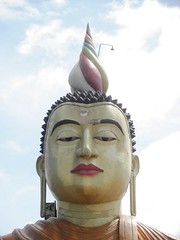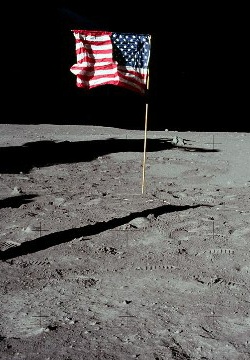Varanasi is the holiest city in all of the Hindu religion. It lies on the Ganges river and is said to have been founded by Shiva, the most important of the Hindu deities. To die in Varanasi grants one instant liberation from the cycle of birth and death, the ultimate goal of the spirit in Hindu philosophy.
I'm sorry, I have to stop for just a second. I just started typing this basic history of Varanasi when the restaurant manager at my lodge comes up to me at the computer and excuses himself to open a locked drawer just above my keyboard. He pulls out a pistol and says "This is American gun, from Obama." This is happening in REAL TIME. OK now I am having a discussion about Barack Obama and the history of the Nobel Prize with a man casually waving a firearm. Something is being muttered about Muslims. We're now discussing the alleged stupidity of both Barack Obama and the nation of Sweden. Now he's reading what I'm typing. Now I am telling you in real time about what my subject is saying about what I am saying about him in real time. I think I just founded Gonzo Postmodernism. The gun has been tucked into his trousers, and he's going out into the alley...
OK where was I?
Historically, the city has been a major religious center since at least 1400 BC and a handful of sites have been used continually since that time. It is a beautiful and bizarre place.
Arriving in Varanasi, one gets the familiar feeling that surely nothing must be holy, because Varanasi forms the third apex of what I call the Douchemuda Triangle, the well-known trio of Delhi, Agra, and Varanasi that suffer from the worst of tourist-plaguing scum. Fortunately, my India game has increased substantially since the dark early days in Delhi and I was able to navigate the thoroughly unnatractive new districts on the fringes of town with relative ease. The rickshaw drivers dropped their full arsenal of attempted scams, until I caused such a scene that they had to call in other drivers whose reputations had not yet been tarnished by being caught in bullshit. After being dropped on the edge of the Old City, more rickshaw-wallahs offered to take me here and there, all bullshit. When I finally told them where I was actually going one guy offered up "Is very far, over two kilometers!" Knowing this was patently false I said it was more like 500 meters and the rickshaws weren't allowed there anyways. "OK OK, one kilometer" he offered, performing an astounding feat of rickshaw-wallahdom that moved the location of the Golden Vishnuwarantha Temple and transcended geography and physics as we know them. "Oooohhhh magic!" I exclaimed, prompting uproarious laughter from the assembled crowd (India is crowded, crowds assemble themselves over anything) and impressing the erstwhile scammers such that one actually took it upon himself to lead me through the alleys without a hassle or pitch.
Once you get into Varanasi's Old City, everything changes. It is a dark maze of exceptionally narrow streets between centuries-old lodges, bazaars, and countless temples and shrines, ranging from 9 to 2 feet wide. There are no cars, no rickshaws, and for the first time in India I heard no honking. It was bliss. Walking down the street one brushes shoulders with a diverse cast of characters. There are tourists. there are merchants and the ubiquitous hustlers and fixers they rely on. There are drug dealers and pimps. The drug dealers identify themselves immediately ("want something high?"), whereas the pimps blend seamlessly into Indian society, revealing their true intents only once they have tested the waters with lengthy small talk. There are policemen by the hundreds, armed with rifles and tucked in squads into tiny alcoves from which they maintain order, most importantly serving as a shield against religious fanaticism, because if there is anywhere where religious zealotry could suddenly combust, it is here.
Most noticeably of all, there are the myriad different Hindu priests and holy men. One of the great things about Hinduism is that it accommodates an essentially infinite variety of religious practice. However, this also has the effect of giving the loonies free reign. Varanasi draws a dazzling array of wandering religious men, most of whom have long beards, painted skin, and orange robes draped over their haggard bodies. Some are additionally weighed down with purple and yellow cloths, wreaths of flowers, skulls, bells, pots, conch horns, and an array of offerings to be made on the circuit of the city's greatest shrines. Some of these men carry the very aura of piousness, others seem suspiciously like kooks who take great pleasure in leading a life where they can paint themselves and harangue strangers with bells.
There are the cows. Dear lord, are there cows. Fat, happy cows. In Varanasi, the myth of a single cow bringing all traffic to a stop is true, not because traffic ever really stops for a cow (there are no rules to the road, you just go around), but because the cows are so fat and the streets so narrow that one may find oneself in a standoff with a creature that takes up the entire passage and has horns. However, I can't bring myself to dislike the cows here. They just seem to belong, hanging in their favorite alleys and wandering the cityscape without a care. Within the physical body of every cow is God, I was told one night over tea by the side of the Ganges. The cows here are so serene, so strangely noble, that I can feel myself almost starting to believe it.
Finally, in Varanasi there is the unmistakable presence of death. It was here that the Lord of Death was given his power, except in the City of Life itself. Varanasi's spiritual heart is the ghats, the massive riverside steps that extend along the length of the city. There are dozens, each capped with temples and shrines. From the steps people commune from all walks of life. There are the laundymen, the meditating saddhus, the pious pilgrims washing themselves in the God-infused waters of the Ganges. Finally there are the dead. Two of Varanasi's ghats are the great burning ghats, where the dead are publicly cremated by the sacred river. At the larger of the two cremation ghats, massive piles of firewood line the streets and barges offshore, with dozens of funeral pyres burning at a time. The heat is tremendous and the smoke, though mostly from the hundreds of kilograms of wood in each pyre, feels as though it fills the lungs with the ashes of the dead and the crackling cloud-bound embers of liberation.
With liberation as its reward, countless people travel here to die. Above the ghats where the dead are burnt, within the warmth of their glow, lodges house the dying who await their turn. One can look through the darkened windows of these lodges and see nothing for the dying lie too low to be seen, but every few minutes a party of Untouchables carries another veiled corpse from these quarters or from the narrow alleys leading to the rest of the city. Over 300 people are burnt here every day. An additional 100, Untouchables, lepers, outcasts, and holy men who have transcended the caste system are bound to rocks and dropped into the Ganges.
I'm not drawn to these spectacles of death. Indeed, for the most part I avoid them. The heat is uncomfortable, the endless activity of overlapping funerals at the ghat approaches the mundane so much that it is numbing. I find myself tethered here instead by an intense awareness of life. Perhaps with such stark contrast in evidence, pillars of white smoke perpetually marking the cremation ghat's position on the riverside, an awareness of life is all but inevitable. Everyone else here seems to feel life too. The sincerity of the pious gazing longingly into the Ganges, the remarkable color and vibrancy of the city's spiritual life, the ever-present clamor of bells, the majesty of the massive steps leading up into the city, the claustrophobic lanes where one can't help but be bumped into one of the innumerable shrines, flowerpots and candles floating downstream, the brilliant flood-weathered architecture all make this an inescapably alluring place.
Aside from working on a valuable article for work about the finer points of travel by rickshaw, I've mostly just been absorbing the city and learning my way through the labyrinth, periodically sit by the river and learn my way up and down the riverside through all the gates. I have favorites. The Marikarnika Ghat, though known mostly for its cremations which I avoid, has also a fascinating pool, said to be the well into which Shiva dropped his earring in a cosmic dance at the time of creation. Just beyond this is the Scindia ghat, where a massive Shiva temple has fallen into the river, leaving its ornate spire tilting out of the waters. The waters rise several stories every monsoon season. I am assured that the trees on the plain across the river are left completely underwater. Looking at the height at which the main shrines sit above the steps, and the height to which the steps are caked in thick, packed mud, I am inclined to believe this. The city maintains a fleet of small pump-boats whose purpose is to blast river water at the mud and clean off the monsoon's deposits on the ghats. Firehoses are pumped without regard for passers-by and without warning, sending pilgrims and cows alike to scatter in shock. Sometimes this occurs at perfectly clean ghats. I suspect this is the stepcleaners' way of fucking with priests, cows, and the Establishment. If I could turn firehoses on smug-ass cows and unsuspecting meditating saddhus every day, that might be the one job in India I would trade for my own.
I'm making Varanasi my base in India, a place to periodically return. I can sit on the ghats for hours, and the absence of honking and smog make it an appealing place to work between journeys. Indeed, I have all my needs met without having to leave the twisting confines of the Old City, free from the ugly commotion and decrepitude of New India. I have a little room in a lodge in a tiny alley. At one end of the alley is a marvelous Japanese cafe, at the other an Indian restaurant with live Classical Indian music. I've got a computer and hot breakfast and it's cheap. My alley has a rotating cast of cows, some of whom I'm starting to recognize as regulars. My only complaint is that I have a first-floor window facing an even narrower alley leading to a busy temple, and every night a battle between three angry dogs for mastery of this alley takes place beneath my window, interrupted only by the occasional interventions of a man of questionable mental health.
I was going to write some more about my theories regarding the Indian rules of traffic, the institution of Indian pimphood, and the beginner's guide to buffalo herding I promised, but I got carried away writing about how much I love Varanasi. That and I was literally interrupted by a dude with a handgun.
He hasn't come back. I'd really like to know what he's up to.
Oct 13, 2009
Subscribe to:
Post Comments (Atom)









No comments:
Post a Comment
Commenting Rules:
1)No spam, viruses, porn etc.
2)DO NOT POST GF-B's REAL NAME
3)Remember this is a public website, don't provide sensitive info about yourself in the internet!